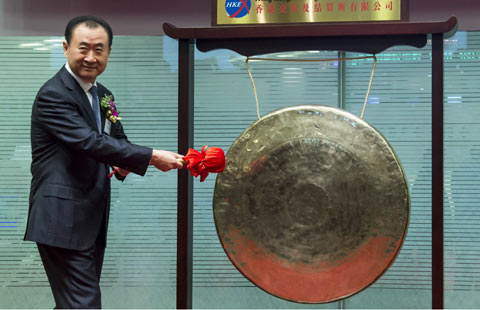Robust IPO deals help rejuvenate Chinese bourses
(Xinhua) Updated: 2015-01-05 07:11The Chinese mainland stock market saw 125 initial public offerings in 2014, raising 78.7 billion yuan ($12.86 billion), consultancy Deloitte said.
This still fell short of the 154 IPOs, which raised 103.4 billion yuan in 2012, the year before IPOs were suspended, Deloitte said.
The China Securities Regulatory Commission, the securities watchdog, approved seven rounds of new offerings since June 2014, when the commission restarted the IPO market.
Deloitte figures showed that IPOs from the Main Board in Shanghai contributed the most funds (43 percent), followed by the Smalland Medium-sized Enterprise Board (29 percent) and Shenzhen's ChiNext (28 percent) .
China's Nasdaq-style board of growth enterprises the ChiNext Board, which started trading on Oct 30, 2009, mainly lists high-tech companies and those with high growth potential.
In terms of new listings, despite a new rule allowing applicants to choose between listing on either the Shanghai or Shenzhen bourse, ChiNext (40 percent) took a dominant position while the Main Board (34 percent) and SME Board (26 percent) trailed.
Anthony Wu from Deloitte China's A-Share Capital Market Leader, says the CSRC's commentary of getting 100 IPO candidates listed from June to the end of 2014 suggested that the market would record at least 23 IPOs during January and February 2015.
The increase in the number of companies added to the Public Offering Review Committee of the CSRC in the last two weeks of 2014 also indicates that the authority is speeding up its issuance pace in order to ease pressure on more than 600 enterprises still waiting for IPO review, Wu says.
Hong Kong enjoyed another record year in 2014. Its new IPOs experienced a double-digit rally from 2013 to 11 percent, while funds raised surged 35 percent.
- London to be key business destination for Chinese lenders
- Meteors mean serious money
- Finding the right direction
- Robust IPO deals help rejuvenate Chinese bourses
- Top 10 underwriters for Chinese companies in 2014
- Executives at SOEs get thinner pay packages
- Subsidies for travel to curb vehicle costs
- Private bank makes first loan
















